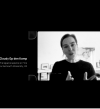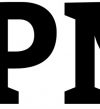Claudy Op Den Kamp, 2017. The Paper Print Collection: How Copyright Formalities and Historical Accidents Led to Film History. UWA Law Review, 41 (2), 37-50..
Prior to the 1912 Townsend Amendment in US copyright law, motion pictures could not be registered as such for copyright protection. Seeking protection against competitors, filmmakers in the formative years of the film industry printed their films to photographic paper and deposited them for copyright as a series of individual photographs. This method of complying with a technicality in the copyright law inadvertently led to the preservation of the earliest chapter in US motion picture history, a chapter that otherwise might have been lost. The so- called Paper Print Collection, still housed at the Library of Congress, encompasses approximately 3,000 film titles. This article examines the significance of the relation between copyright, archival practices and the consequences for the study of film history. It demonstrates how (circumventions of) mandatory copyright formalities were instrumental in the safeguarding of the film titles. In turn, they played a pivotal role in the 1978 International Federation of Film Archives (FIAF) Congress in Brighton, UK, the landmark event that constituted a turning point in film historiography. An examination of the Paper Print Collection provides new insights into the relationship between copyright, registration systems, and media historiographies.





